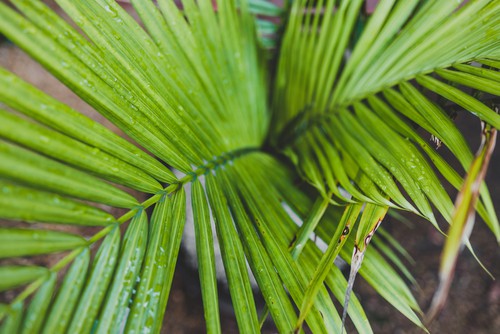Majestic palms are a popular houseplant known for their lush green foliage and tropical vibe. However, if you notice your majestic palm turning yellow, it could be a sign of trouble. Yellowing leaves are a common problem for majestic palms, and it’s important to understand the causes and how to fix them to keep your plant healthy.
Yellowing leaves on a majestic palm can be caused by a variety of factors, including environmental stress, improper watering, nutrient deficiencies, and pest infestations.
Recognizing the cause of the yellowing is key to treating the problem effectively. In this article, we’ll explore the common causes of yellowing in majestic palms and provide tips on how to revive a dying plant.
Key Takeaways
- Understanding the environmental factors affecting majestic palms is crucial to identifying the cause of yellowing leaves.
- Proper watering and nutrient needs are essential for maintaining a healthy majestic palm.
- Dealing with pests and diseases, as well as ensuring proper soil and pot requirements, can help prevent yellowing and revive a dying majestic palm.
More on this category:
- Madagascar Palm Leaves Turning Yellow
- Dracaena Leaves Turning Yellow and Falling Off
- Lion’s Mane Mushroom Turning Yellow
Understanding Majesty Palms
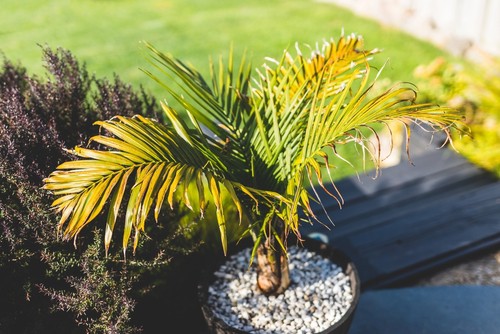
Origin: Tropical Madagascar
Majesty palms, scientifically known as Ravenea rivularis, are native to the tropical island of Madagascar. They are often referred to as the “paradise palm” or “royal palm” due to their elegant and regal appearance. In their natural habitat, they can grow up to 50 feet tall and are commonly found near rivers and streams.
Growth and Appearance
Majesty palms are a popular choice for indoor and outdoor landscaping due to their stunning appearance and ease of care. These palms have long, feathery fronds that can grow up to 8 feet in length, making them a great choice for adding vertical interest to any space.
In terms of growth, Majesty palms are relatively slow-growing compared to other palm species. They typically grow up to 10 feet tall when planted in the ground, and up to 6 feet tall when grown in containers. These palms are also known for their ability to adapt to a variety of lighting conditions, from full sun to partial shade.
Majesty palms are a great choice for adding a tropical touch to any space. Their lush, green fronds add a touch of paradise to any room or garden. However, like any plant, they require proper care and attention to thrive.
One common issue that Majesty palm owners face is yellowing fronds. This can be caused by a variety of factors, including improper watering, insufficient lighting, and nutrient deficiencies.
Recognizing Yellowing in Majesty Palms
Majesty palms are popular indoor plants that can add a touch of tropical beauty to any space. However, if the leaves of your Majesty palm are turning yellow, it could be a sign of a problem. In this section, we will discuss the symptoms and common causes of yellowing in Majesty palms.
1. Symptoms
The first symptom of yellowing in Majesty palms is the loss of the plant’s green color. The leaves may turn yellow or brown, and the plant may start to look sickly. In some cases, the yellowing may start at the tips of the leaves and gradually spread towards the base of the plant.
Another symptom of yellowing in Majesty palms is the appearance of spots or streaks on the leaves. These spots may be brown or black and can be a sign of a fungal or bacterial infection.
2. Common Causes
There are several common causes of yellowing in Majesty palms. One of the most common causes is improper watering. Overwatering or underwatering can both cause the leaves to turn yellow.
If the soil is too wet, the roots of the plant can become waterlogged and start to rot. If the soil is too dry, the plant may not be getting enough water to sustain its growth.
Another common cause of yellowing in Majesty palms is insufficient light. These plants require bright, indirect sunlight to thrive. If the plant is not getting enough light, it may start to lose its green color and turn yellow.
Nutrient deficiency is another common cause of yellowing in Majesty palms. If the plant is not getting enough nutrients, it may start to lose its green color and turn yellow. This can be remedied by fertilizing the plant with a balanced fertilizer.
Pests can also cause yellowing in Majesty palms. Spider mites and mealybugs are common pests that can attack these plants. These pests can cause the leaves to turn yellow and may also cause the plant to become stunted.
Environmental Factors Affecting Majesty Palms
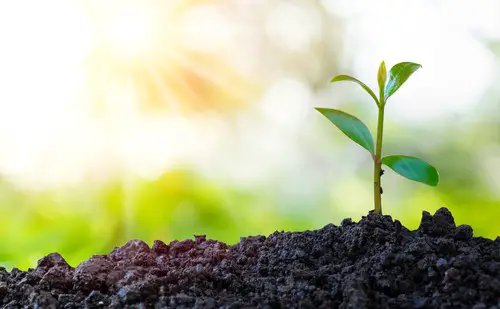
Majesty palms are tropical plants that require specific environmental conditions to thrive. If your majestic palm is turning yellow, it could be due to a range of environmental factors.
In this section, we will discuss the three main factors that affect the health of your majestic palm: light requirements, temperature and humidity, and ideal positioning.
1. Light Requirements
Majesty palms require bright, filtered light to grow properly. Direct sunlight can cause sunburn and yellowing of the leaves, while low light levels can result in slow growth and yellowing of the leaves. Ideally, place your palm in a sunny window that receives filtered light, or use a grow light to supplement the natural light.
2. Temperature and Humidity
Majesty palms thrive in warm, humid environments. They prefer temperatures between 65-85°F (18-29°C) and high humidity levels. Low humidity can cause the leaves to turn brown and crispy, while dry air can cause the tips of the leaves to turn brown.
To increase humidity levels, you can mist the leaves regularly or use a humidifier. If the air in your home is particularly dry, consider placing a tray of water near the palm to increase the moisture in the air.
3. Ideal Positioning
Positioning your majestic palm in the right spot can make all the difference in its health. Avoid placing it near air conditioning vents or drafty windows, as this can cause the leaves to dry out.
Additionally, avoid placing it in direct sunlight, as this can cause sunburn and yellowing of the leaves. Ideally, place your palm in a spot that receives bright, filtered light and has a consistent temperature and humidity level.
Watering Majesty Palms

Majesty palms require proper watering techniques to maintain healthy growth and prevent yellowing of leaves. In this section, we will discuss the importance of watering and drainage for majestic palms.
Proper Watering Techniques
Proper watering techniques are crucial for the health of a majestic palm. Overwatering or underwatering can lead to yellowing of leaves and even death of the plant. It is important to maintain proper soil moisture levels by watering the plant when the top inch of soil is dry.
It is recommended to use a moisture meter to determine the soil moisture level. This tool can help to avoid overwatering or underwatering. When watering, it is important to water deeply and allow the excess water to drain out of the drainage holes.
Overwatering vs Underwatering
Overwatering and underwatering can both cause yellowing of leaves in majestic palms. Overwatering can lead to root rot, which can cause the leaves to turn yellow and eventually fall off. On the other hand, underwatering can cause the leaves to turn yellow and dry out.
It is important to find the right balance between watering and allowing the soil to dry out. This can be achieved by checking the soil moisture level regularly and adjusting the watering schedule accordingly.
Importance of Drainage
Proper drainage is crucial for the health of a majestic palm. Without proper drainage, the soil can become waterlogged, leading to root rot and yellowing of leaves. It is important to ensure that the pot has drainage holes to allow excess water to drain out.
When watering, it is important to water deeply and allow the excess water to drain out of the drainage holes. It is recommended to use a saucer to catch the excess water and discard it after a few minutes.
Nutrient Needs and Fertilization
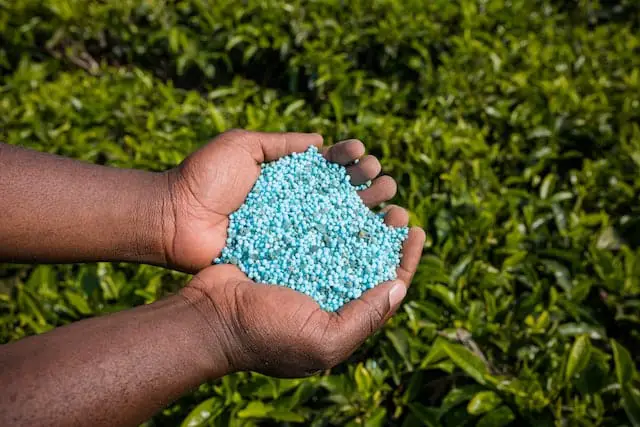
Majestic palms require a balanced nutrient supply to maintain their health and vibrant green color. Nutrient deficiencies can cause yellowing of leaves, stunted growth, and even death of the plant.
Fertilization is a crucial aspect of maintaining the health of majestic palms. In this section, we will discuss the signs of nutrient deficiency and choosing the right fertilizer for majestic palms.
Signs of Nutrient Deficiency
Majestic palms can show signs of nutrient deficiency in various ways. Yellowing of leaves is a common symptom of nitrogen deficiency. Iron deficiency can cause yellowing of leaves with green veins.
Magnesium deficiency can lead to yellowing of leaves between veins. A lack of nutrients can also cause stunted growth and a weakened plant. Maintaining the proper pH level of the soil is also essential for nutrient uptake.
Choosing the Right Fertilizer
Choosing the right fertilizer for majestic palms is crucial for their health and growth. A balanced fertilizer with a ratio of 3-1-2 (nitrogen, phosphorus, and potassium) is ideal for majestic palms.
Liquid fertilizer can be applied every two weeks during the growing season, while slow-release fertilizers can be applied once or twice a year. It’s essential to avoid over-fertilizing, as it can lead to salt buildup and damage to the plant.
When choosing a fertilizer, it’s crucial to consider the pH level of the soil. Acidic soil can lead to nutrient deficiencies, while alkaline soil can cause nutrient lockout. A soil test can help determine the pH level of the soil and the nutrients required for the plant.
It’s essential to choose a fertilizer that matches the nutrient requirements of the plant and the pH level of the soil.
Dealing with Pests and Diseases
Common Pests
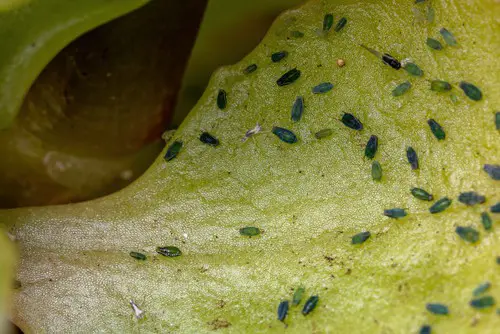
Majesty palms are prone to pest infestations, which can cause the plant to turn yellow. Spider mites, mealybugs, aphids, and scale are common insect pests that can infest a majesty palm.
These pests are sap-sucking bugs that can cause the leaves to turn yellow and dry out. In severe cases, the pests can cause the leaves to fall off, which can be detrimental to the overall health of the plant.
Spider mites are tiny pests that produce webs on the leaves of the plant. Mealybugs are small, white, and fuzzy insects that can be found on the undersides of the leaves.
Aphids are small, green or black insects that can be found on the new growth of the plant. Scale insects are small, oval-shaped insects that can be found on the stems and leaves of the plant.
To get rid of these pests, it is important to identify the type of pest and use the appropriate treatment. Insecticidal soap, neem oil, and horticultural oil are effective treatments for spider mites, mealybugs, and aphids.
Scale insects can be removed by scraping them off with a soft-bristled brush or spraying the plant with horticultural oil.
Identifying Diseases
Majesty palms are also susceptible to fungal diseases, which can cause the plant to turn yellow. Fungal diseases such as Fusarium wilt, leaf spot, and root rot can cause the leaves to turn yellow and brown.
Fusarium wilt is a fungal disease that causes the leaves to wilt and turn yellow. Leaf spot is a fungal disease that causes brown spots on the leaves. Root rot is a fungal disease that causes the roots to rot and the leaves to turn yellow.
To prevent fungal diseases, it is important to ensure that the plant is not overwatered and that the soil has good drainage. If the plant is already infected with a fungal disease, it is important to remove the infected leaves and treat the plant with a fungicide.
Copper fungicides are effective treatments for fungal diseases in majesty palms.
Soil and Pot Requirements

Ideal Soil Composition
The soil composition is a crucial factor in the health of Majesty Palms. The ideal soil for these plants should be well-draining, as they are prone to root rot. A mixture of sand, peat moss, and compost is a good option. The sand will help with drainage, while the peat moss and compost will provide nutrients to the plant.
Pot Size and Repotting
Majesty Palms grow relatively quickly, so it is essential to choose a pot that is large enough to accommodate the root ball. A pot that is too small will restrict growth and can lead to root rot. A good rule of thumb is to choose a pot that is one size larger than the current container.
Repotting should be done every two to three years to provide the plant with fresh soil and room to grow. When repotting, gently remove the plant from the old container and loosen any tangled roots. Place the plant in the new pot and fill in the gaps with fresh soil.
It is also important to note that Majesty Palms prefer to be slightly root-bound, so avoid choosing a pot that is too large for the plant.
Care Techniques for Majesty Palms
Majesty palms are a popular houseplant due to their elegant appearance and low maintenance. However, they can be prone to yellowing fronds, which can be a sign of stress, improper care, or disease. In this section, we’ll cover some essential care techniques for keeping your majesty palm healthy and vibrant.
1. Pruning
Pruning is an essential aspect of maintaining a healthy majesty palm. Over time, the lower fronds may turn yellow and die off, which can be unsightly and also attract pests.
To prune your majesty palm, use sharp and sterile pruning shears to remove any dead or yellow fronds. Be sure to cut the frond as close to the trunk as possible without damaging the trunk itself. Pruning also encourages new growth and helps the plant maintain its shape.
2. Misting and Humidity Trays
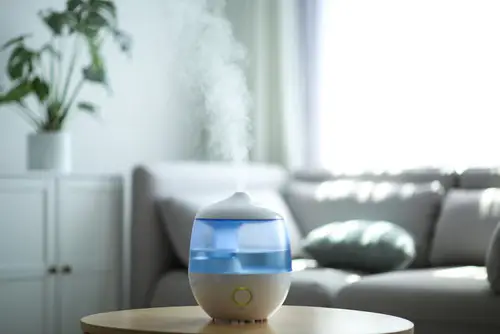
Majesty palms are native to humid environments, so maintaining a consistent level of humidity is essential for their health. One way to increase humidity levels is by misting the leaves regularly.
Fill a spray bottle with water and mist the leaves once or twice a week. You can also place a humidity tray filled with water near the plant to increase the moisture in the air. A humidity tray is a shallow tray filled with stones or pebbles and water. The plant sits on top of the stones, and the water evaporates, creating a humid microclimate.
3. Winter Care
Majesty palms are tropical plants and are sensitive to cold temperatures. During the winter months, it’s essential to protect your plant from drafts and keep it away from windows and doors.
If you live in a particularly cold climate, consider moving your plant to a warmer location or covering it with a cloth or blanket to protect it from the cold.
Reviving a Dying Majesty Palm
Assessing the Damage
When a Majesty Palm starts turning yellow or brown, it is a sign that something is wrong. The first step to reviving a dying Majesty Palm is to assess the damage. Check the plant for any signs of pests or disease.
Look for brown, crispy leaves or brown spots on the leaves. These are signs of chlorosis, a condition that occurs when the plant is not getting enough nutrients or is suffering from a pest infestation.
Steps to Revival
Once you have assessed the damage, it is time to take steps to revive your Majesty Palm.
Step 1: Prune the Damaged Leaves
Start by pruning any brown, crispy leaves or brown spots on the leaves. This will help the plant focus its energy on healthy leaves and promote new growth. Use a pair of sharp, clean scissors or pruning shears to cut the leaves off the plant.
Be sure to disinfect your tools with rubbing alcohol or horticultural oil to prevent the spread of disease.
Step 2: Address Watering and Soil Issues
The most common cause of Majesty Palm yellowing is improper watering and soil issues. Make sure you are watering your plant correctly by checking the soil moisture level.
The soil should be moist but not waterlogged. If the soil is too dry, water the plant thoroughly and let the excess water drain away. If the soil is too wet, let the soil dry out before watering again.
Step 3: Address Nutrient Deficiencies
If your Majesty Palm is suffering from chlorosis, it may be lacking essential nutrients. Fertilize the plant with a balanced fertilizer to provide the necessary nutrients for healthy growth. Be sure to follow the instructions on the fertilizer package and avoid over-fertilizing, as this can cause more harm than good.
Step 4: Address Pest Infestations
If you have identified a pest infestation, such as spider mites or mealybugs, treat the plant with insecticidal soap or horticultural oil. These products are effective at killing pests without harming the plant. Follow the instructions on the product label and repeat the treatment as needed.
Step 5: Propagate the Plant
If your Majesty Palm is beyond revival, consider propagating the plant. This involves taking a cutting from the plant and rooting it in water or soil. This is a great way to start a new plant and enjoy the beauty of the Majesty Palm once again.
Frequently Asked Questions
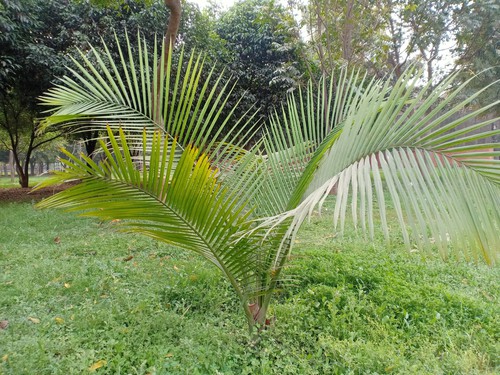
Why is my majestic palm tree turning yellow?
Majestic palm trees can turn yellow due to a variety of reasons, such as overwatering, underwatering, nutrient deficiency, pests, or insufficient light conditions. It is important to identify the underlying cause before taking any corrective action.
What does an overwatered majesty palm look like?
An overwatered majestic palm may have yellow leaves that are soft and mushy to the touch. The soil may also be waterlogged and have a foul odor. In severe cases, the roots may rot, causing the tree to die.
How do you save a yellow majesty palm?
To save a yellow majesty palm, you need to identify the underlying cause and take appropriate action. For example, if the tree is overwatered, you should reduce watering and ensure proper drainage.
If the tree is nutrient deficient, you should fertilize it with a balanced fertilizer. If pests are the problem, you should use an appropriate insecticide.
Should I cut off yellow palm leaves?
You should cut off yellow palm leaves if they are dead or severely damaged. However, if the leaves are only partially yellow, you should wait and see if they can recover. Cutting off healthy leaves can harm the tree and affect its growth.
How do I treat yellow leaves on my palm tree?
Treating yellow leaves on a palm tree depends on the underlying cause. If the tree is overwatered, you should reduce watering and ensure proper drainage.
If the tree is nutrient deficient, you should fertilize it with a balanced fertilizer. If pests are the problem, you should use an appropriate insecticide. In some cases, it may take several weeks for the tree to recover.
Can yellow palm leaves turn green again?
In some cases, yellow palm leaves can turn green again if the underlying cause is identified and corrected in time.
For example, if the tree is nutrient deficient, fertilizing it with a balanced fertilizer can help the leaves turn green again. However, if the leaves are severely damaged or dead, they cannot turn green again and should be cut off.

Hey, I’m Lisa and I’ve been an avid gardener for over 30 years. I love writing, talking and living in the garden! Feel free to connect with me on my socials below

